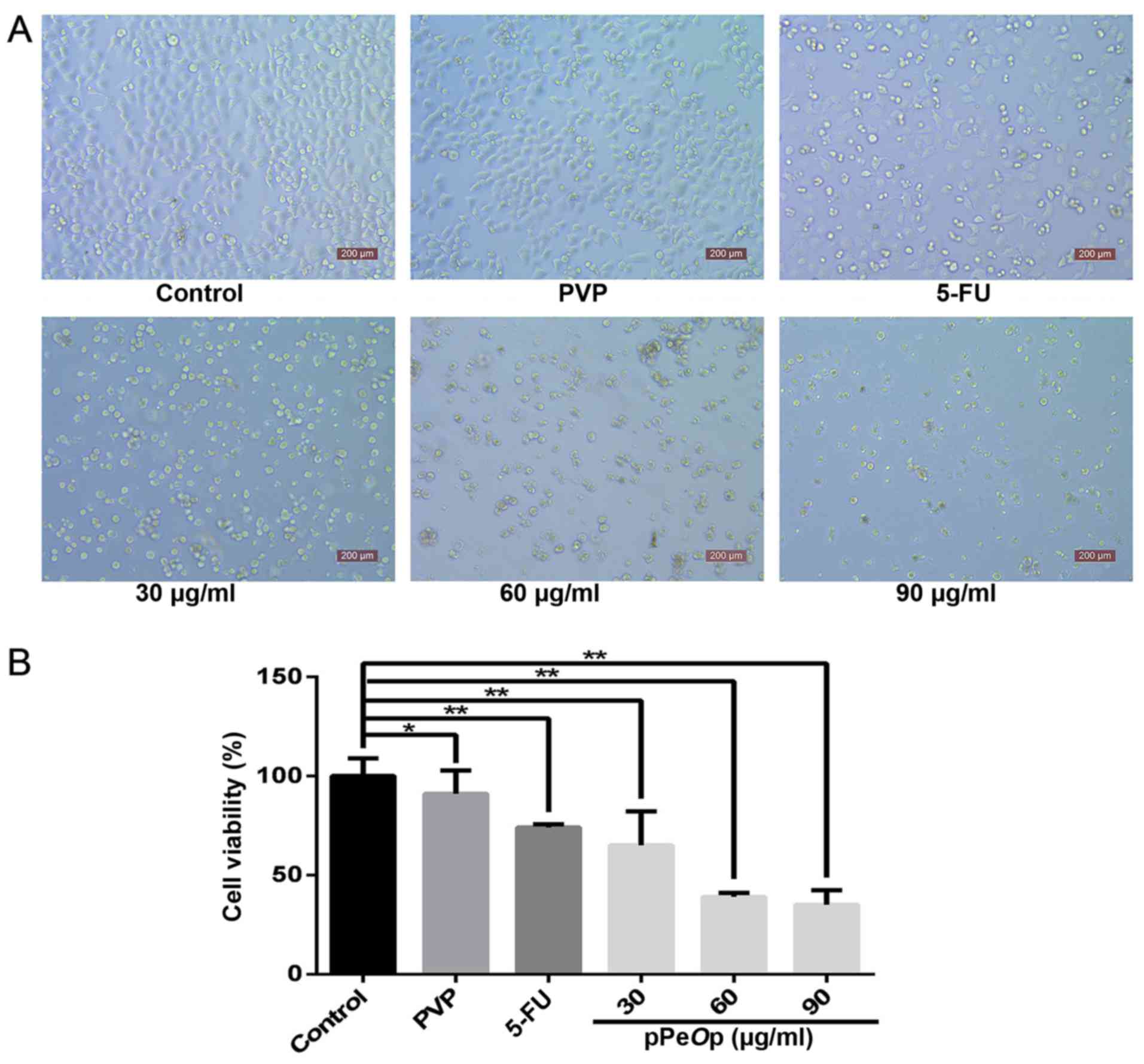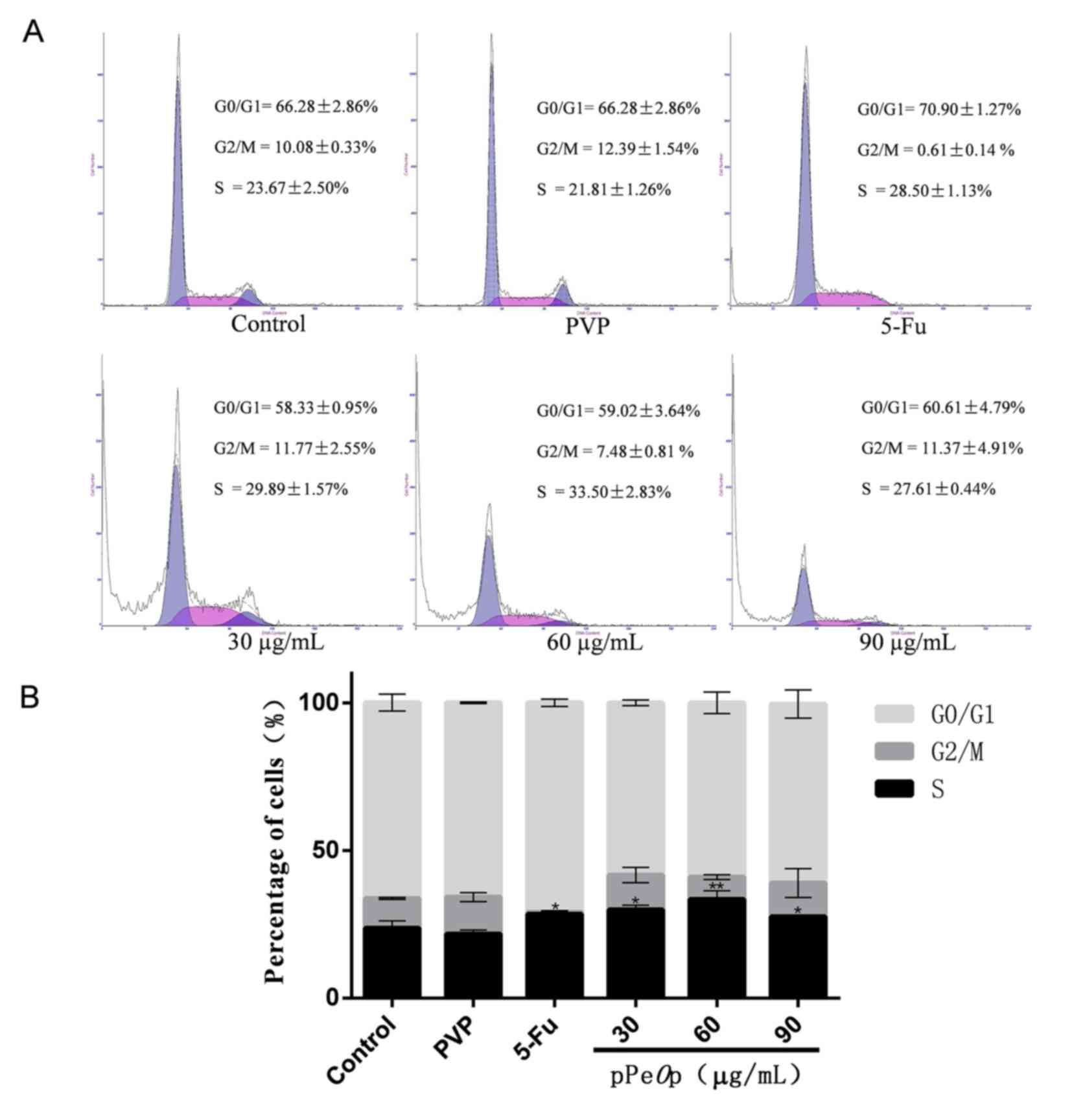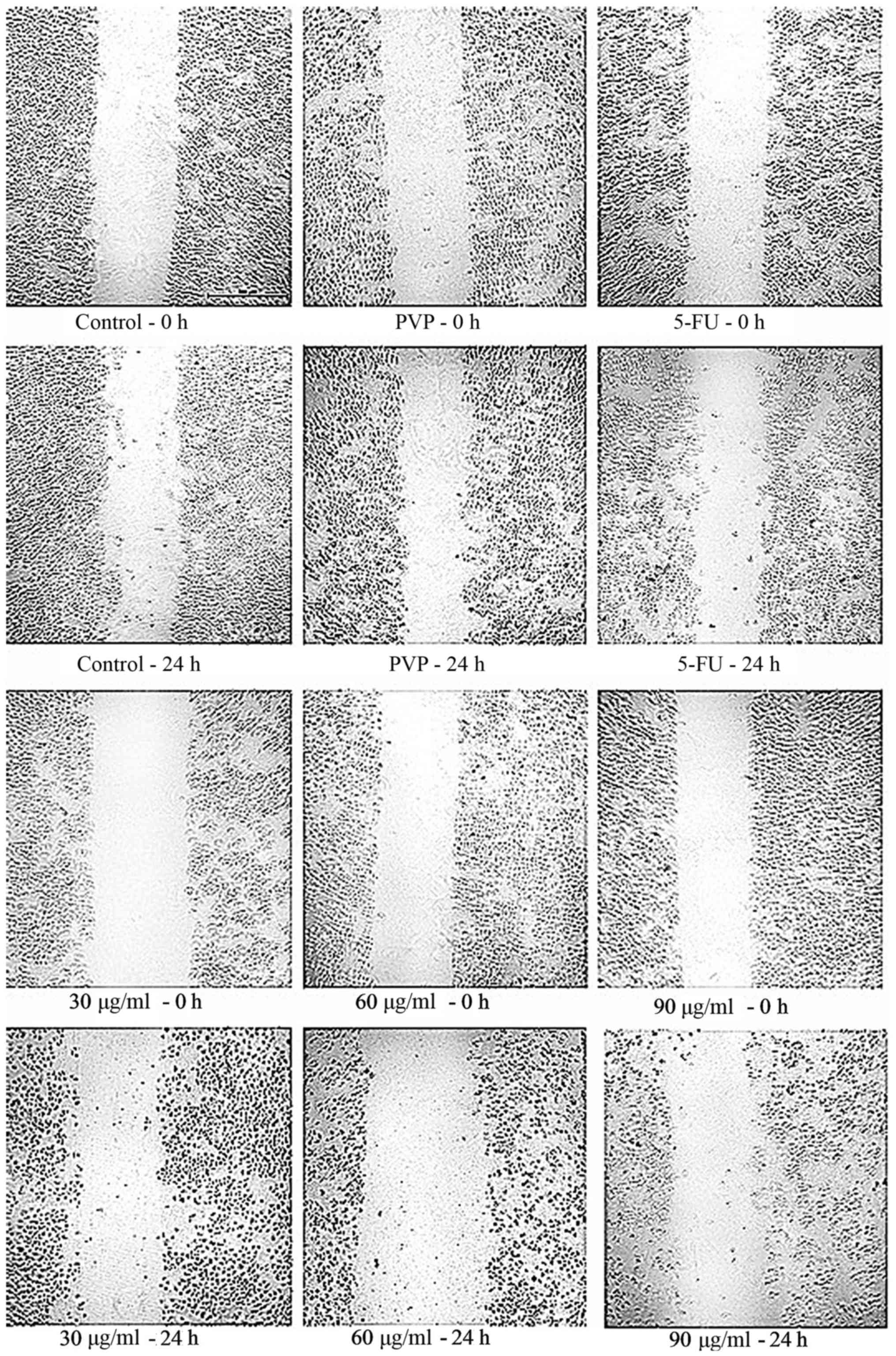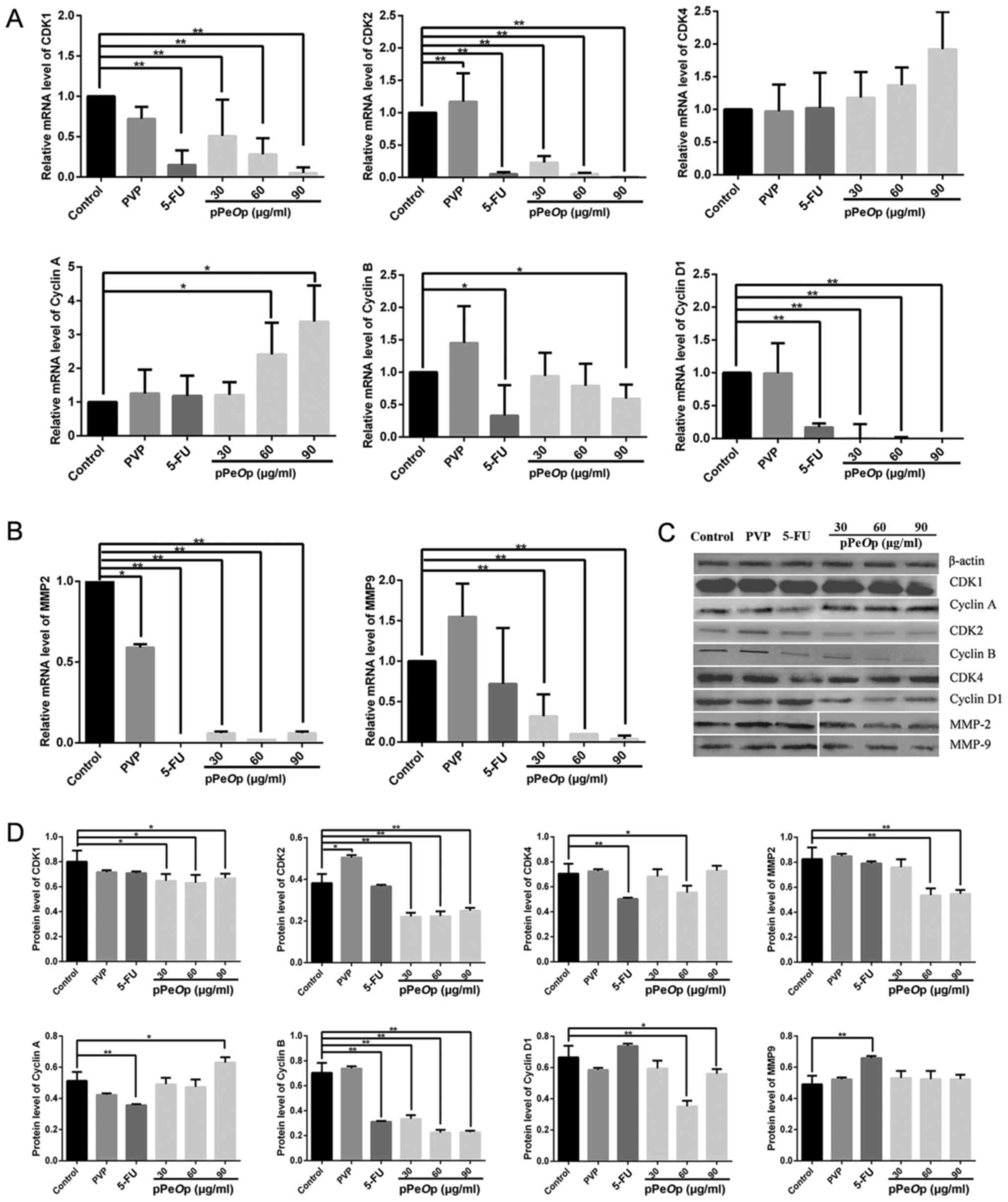|
1
|
Song W, Liu YY, Peng JJ, Liang HH, Chen
HY, Chen JH, He WL, Xu JB, Cai SR and He YL: Identification of
differentially expressed signatures of long non-coding RNAs
associated with different metastatic potentials in gastric cancer.
J Gastroenterol. 51:119–129. 2016. View Article : Google Scholar : PubMed/NCBI
|
|
2
|
Choi HJ, Ki CS, Suh SP and Kim JW:
Presymptomatic identification of CDH1 germline mutation in a
healthy Korean individual with family history of gastric cancer.
Ann Lab Med. 34:386–389. 2014. View Article : Google Scholar : PubMed/NCBI
|
|
3
|
Jiang C, Chen X, Alattar M, Wei J and Liu
H: MicroRNAs in tumorigenesis, metastasis, diagnosis and prognosis
of gastric cancer. Cancer Gene Ther. 22:291–301. 2015. View Article : Google Scholar : PubMed/NCBI
|
|
4
|
Zhao J, Liu Y, Huang G, Cui P, Zhang W and
Zhang Y: Long non-coding RNAs in gastric cancer: Versatile
mechanisms and potential for clinical translation. Am J Cancer Res.
5:907–927. 2015.PubMed/NCBI
|
|
5
|
Robertson-Tessi M, Gillies RJ, Gatenby RA
and Anderson AR: Impact of metabolic heterogeneity on tumor growth,
invasion, and treatment outcomes. Cancer Res. 75:1567–1579. 2015.
View Article : Google Scholar : PubMed/NCBI
|
|
6
|
Li J, Li L, Liu R and Lin HS: Establishing
Chinese medicine characteristic tumor response evaluation system is
the key to promote internationalization of Chinese medicine
oncology. Chin J Integr Med. 18:730–736. 2012. View Article : Google Scholar : PubMed/NCBI
|
|
7
|
Qi F, Li A, Inagaki Y, Gao J, Li J, Kokudo
N, Li XK and Tang W: Chinese herbal medicines as adjuvant treatment
during chemo- or radio-therapy for cancer. Biosci Trends.
4:297–307. 2010.PubMed/NCBI
|
|
8
|
Ling CQ, Yue XQ and Ling C: Three
advantages of using traditional Chinese medicine to prevent and
treat tumor. J Integr Med. 12:331–335. 2014. View Article : Google Scholar : PubMed/NCBI
|
|
9
|
Chen YT, Lin MA, Cheng DQ, Shi ZJ, Zhu JL
and Wu J: Effect of proteins extracted from mycelia of Omphalia
lapidescens on inhibiting H, liver cancer in mice and regulating
immune function. Zhong Yao Cai. 32:1870–1874. 2009.(In Chinese).
PubMed/NCBI
|
|
10
|
Yan H, Rong X, Chen PT, Zhang X and Ma ZQ:
Two new steroids from sclerotia of the fungus Omphalia lapidescens.
J Asian Nat Prod Res. 16:265–270. 2014. View Article : Google Scholar : PubMed/NCBI
|
|
11
|
Ohno N, Saito K, Nemoto J, Kaneko S,
Adachi Y, Nishijima M, Miyazaki T and Yadomae T:
Immunopharmacological characterization of a highly branched fungal
(1->3)-beta-D-glucan, OL-2, isolated from Omphalia lapidescens.
Biol Pharm Bull. 16:414–419. 1993. View Article : Google Scholar : PubMed/NCBI
|
|
12
|
Saito K, Nishijima M, Ohno N, Yadomae T
and Miyazaki T: Structure and antitumor activity of the
less-branched derivatives of an alkali-soluble glucan isolated from
Omphalia lapidescens. (Studies on fungal polysaccharide. XXXVIII).
Chem Pharm Bull (Tokyo). 40:261–263. 1992. View Article : Google Scholar : PubMed/NCBI
|
|
13
|
Zhang G, Huang Y, Bian Y, Wong JH, Ng TB
and Wang H: Hypoglycemic activity of the fungi Cordyceps
militarisCordyceps sinensisTricholoma mongolicum, and Omphalia
lapidescens in streptozotocin-induced diabetic rats. Appl Microbiol
Biotechnol. 72:1152–1156. 2006. View Article : Google Scholar : PubMed/NCBI
|
|
14
|
Chen YT, Lu QY, Lin MA, Cheng DQ, Ding ZS
and Shan LT: A PVP-extract fungal protein of Omphalia lapidescens
and its antitumor activity on human gastric tumors and normal
cells. Oncol Rep. 26:1519–1526. 2011.PubMed/NCBI
|
|
15
|
Livak KJ and Schmittgen TD: Analysis of
relative gene expression data using real-time quantitative PCR and
the 2(−Delta Delta C(T)) method. Methods. 25:402–408. 2001.
View Article : Google Scholar : PubMed/NCBI
|
|
16
|
Zhang Y, Pan T, Zhong X and Cheng C:
Androgen receptor promotes esophageal cancer cell migration and
proliferation via matrix metalloproteinase 2. Tumour Biol.
36:5859–5864. 2015. View Article : Google Scholar : PubMed/NCBI
|
|
17
|
Lin Y, Peng N, Zhuang H, Zhang D, Wang Y
and Hua ZC: Heat shock proteins HSP70 and MRJ cooperatively
regulate cell adhesion and migration through urokinase receptor.
BMC Cancer. 14:6392014. View Article : Google Scholar : PubMed/NCBI
|
|
18
|
Sun A, Yu G, Dou X, Yan X, Yang W and Lin
Q: Nedd4-1 is an exceptional prognostic biomarker for gastric
cardia adenocarcinoma and functionally associated with metastasis.
Mol Cancer. 13:2482014. View Article : Google Scholar : PubMed/NCBI
|
|
19
|
Cao K, Xie D, Cao P, Zou Q, Lu C, Xiao S,
Zhou J and Peng X: SiRNA-mediated flotillin-2 (Flot2)
downregulation inhibits cell proliferation, migration, and invasion
in gastric carcinoma cells. Oncol Res. 21:271–279. 2014. View Article : Google Scholar : PubMed/NCBI
|
|
20
|
Lu S, Zhu Q, Zhang Y, Song W, Wilson MJ
and Liu P: Dual-functions of miR-373 and miR-520c by differently
regulating the activities of MMP2 and MMP9. J Cell Physiol.
230:1862–1870. 2015. View Article : Google Scholar : PubMed/NCBI
|
|
21
|
Tong WW, Tong GH, Chen XX, Zheng HC and
Wang YZ: HIF2α is associated with poor prognosis and affects the
expression levels of survivin and cyclin D1 in gastric carcinoma.
Int J Oncol. 46:233–242. 2015.PubMed/NCBI
|
|
22
|
Płuciennik E, Nowakowska M, Pospiech K,
Stępień A, Wołkowicz M, Gałdyszyńska M, Popęda M, Wójcik-Krowiranda
K, Bieńkiewicz A and Bednarek AK: The role of WWOX tumor suppressor
gene in the regulation of EMT process via regulation of
CDH1-ZEB1-VIM expression in endometrial cancer. Int J Oncol.
46:2639–2648. 2015.PubMed/NCBI
|
|
23
|
Leight JL, Tokuda EY, Jones CE, Lin AJ and
Anseth KS: Multifunctional bioscaffolds for 3D culture of melanoma
cells reveal increased MMP activity and migration with BRAF kinase
inhibition. Proc Natl Acad Sci USA. 112:pp. 5366–5371. 2015;
View Article : Google Scholar : PubMed/NCBI
|
|
24
|
Zheng L, Zhang YM, Zhan YZ and Liu CX:
Momordica cochinchinensis seed extracts suppress migration and
invasion of human breast cancer ZR-75-30 cells via down-regulating
MMP-2 and MMP-9. Asian Pac J Cancer Prev. 15:1105–1110. 2014.
View Article : Google Scholar : PubMed/NCBI
|
|
25
|
da Rosa MR, Falcão AS, Fuzii HT, da Silva
Kataoka MS, Ribeiro AL, Boccardo E, De Siqueira AS, Jaeger RG, de
Jesus Viana Pinheiro J and de Melo Alves S Júnior: EGFR signaling
downstream of EGF regulates migration, invasion and MMP secretion
of immortalized cells derived from human ameloblastoma. Tumour
Biol. 35:11107–11120. 2014. View Article : Google Scholar : PubMed/NCBI
|
|
26
|
Liu F, Zhou J, Zhou P, Chen W and Guo F:
The ubiquitin ligase CHIP inactivates NF-κB signaling and impairs
the ability of migration and invasion in gastric cancer cells. Int
J Oncol. 46:2096–2106. 2015.PubMed/NCBI
|
|
27
|
Kim D, Lee D, Jang YL, Chae SY, Choi D,
Jeong JH and Kim SH: Facial amphipathic deoxycholic acid-modified
polyethyleneimine for efficient MMP-2 siRNA delivery in vascular
smooth muscle cells. Eur J Pharm Biopharm. 81:14–23. 2012.
View Article : Google Scholar : PubMed/NCBI
|
|
28
|
Matusewicz L, Meissner J, Toporkiewicz M
and Sikorski AF: The effect of statins on cancer cells-review.
Tumour Biol. 36:4889–4904. 2015. View Article : Google Scholar : PubMed/NCBI
|
|
29
|
Parajuli KR, Zhang Q, Liu S and You Z:
Aminomethylphosphonic acid and methoxyacetic acid induce apoptosis
in prostate cancer cells. Int J Mol Sci. 16:11750–11765. 2015.
View Article : Google Scholar : PubMed/NCBI
|
|
30
|
Saiko P, Steinmann MT, Schuster H, Graser
G, Bressler S, Giessrigl B, Lackner A, Grusch M, Krupitza G,
Bago-Horvath Z, et al: Epigallocatechin gallate, ellagic acid, and
rosmarinic acid perturb dNTP pools and inhibit de novo DNA
synthesis and proliferation of human HL-60 promyelocytic leukemia
cells: Synergism with arabinofuranosylcytosine. Phytomedicine.
22:213–222. 2015. View Article : Google Scholar : PubMed/NCBI
|
|
31
|
Hong S, Gu Y, Gao Z, Guo L, Guo W, Wu X,
Shen Y, Sun Y, Wu X and Xu Q: EGFR inhibitor-driven endoplasmic
reticulum stress-mediated injury on intestinal epithelial cells.
Life Sci. 119:28–33. 2014. View Article : Google Scholar : PubMed/NCBI
|
|
32
|
Evers B, Helleday T and Jonkers J:
Targeting homologous recombination repair defects in cancer. Trends
Pharmacol Sci. 31:372–380. 2010. View Article : Google Scholar : PubMed/NCBI
|
|
33
|
Liu Z, Rader J, He S, Phung T and Thiele
CJ: CASZ1 inhibits cell cycle progression in neuroblastoma by
restoring pRb activity. Cell Cycle. 12:2210–2218. 2013. View Article : Google Scholar : PubMed/NCBI
|
|
34
|
Cao Z, Lin W, Huang Z, Chen X, Zhao J,
Zheng L, Ye H, Liu Z, Liao L and Du J: Ethyl acetate extraction
from a Chinese herbal formula, Jiedu Xiaozheng Yin, inhibits the
proliferation of hepatocellular carcinoma cells via induction of
G0/G1 phase arrest in vivo and in vitro. Int J Oncol. 42:202–210.
2013.PubMed/NCBI
|
|
35
|
Marconett CN, Morgenstern TJ, San Roman
AK, Sundar SN, Singhal AK and Firestone GL: BZL101, a phytochemical
extract from the Scutellaria barbata plant, disrupts proliferation
of human breast and prostate cancer cells through distinct
mechanisms dependent on the cancer cell phenotype. Cancer Biol
Ther. 10:397–405. 2010. View Article : Google Scholar : PubMed/NCBI
|


















